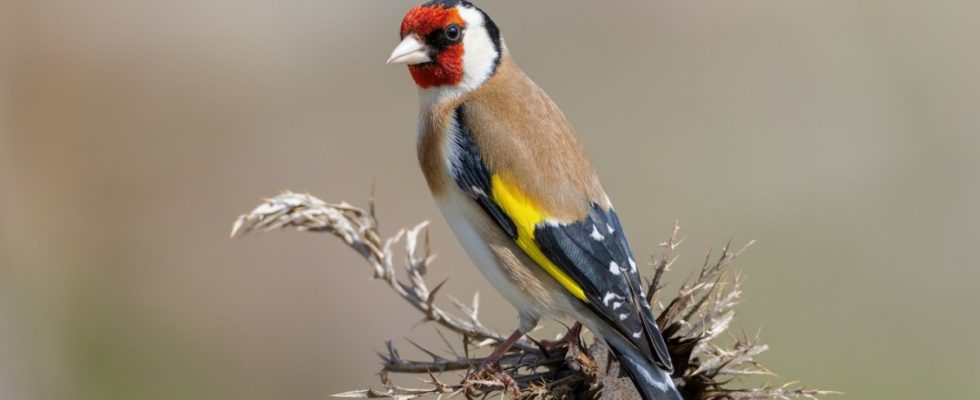It wasn’t that long ago that conservationists in Bavaria were very worried about the goldfinch. Until well into the 1900s, populations of this songbird, which is actually widespread, declined from year to year. It is slightly smaller than the sparrow and is one of the most colorful native birds with its red facial mask, the black back of the head and the distinctive yellow bands on the otherwise black-feathered wings. In 2016, the goldfinch, whose call sounds like the word “stiglite”, was even placed on the Red List’s early warning list.
Then the trend reversal came. Goldfinch populations have not only stabilized. Instead, they are increasing again – by around three percent per year, as the monitoring of frequent breeding birds by the State Association for Bird Protection (LBV) shows. “The goldfinch is undoubtedly a nature conservation success story,” says LBV boss Norbert Schäffer. And not the only one in Bavaria. The re-spreading of white storks, peregrine falcons and meadow harriers is also happening. Of course, they needed sophisticated species rescue programs and a lot of commitment.
However, these successes should not obscure the fact that the loss of species is also continuing in the Free State. Schäffer emphasizes this on the occasion of World Endangered Species Day on Sunday. It takes place on March 3rd every year. The United Nations, which declared it, wants to draw attention to the extinction of species worldwide. “The species crisis doesn’t just affect the polar bear in the Arctic or the orangutan in the tropical rainforest,” says Schäffer. “But also partridges, sail butterflies and moor freshly right here in Bavaria.” Partridge losses, for example, are now 95 percent.
In this country, the species crisis, as experts have recently called the extinction of species, is most dramatic in the agricultural regions, where farmers apply a lot of chemical pesticides and fertilizers, mow the meadows frequently and the fields are so cleared that there are hardly any hedges, fields and other habitats for wild animals. The still widespread drainage of landscapes with ditches and drains is also bad for biodiversity. Whinchats, curlews, black-tailed godwits and the like depend on moist meadows with hollows in which the water stands.
The black-tailed godwit, here a specimen in the Netherlands, is very endangered in Bavaria.
(Photo: Wilfried Martin/Imago/imagebroker)
There are currently only eleven breeding pairs of the black-tailed godwit left – in all of Bavaria. “She is, figuratively speaking, in the intensive care unit,” says Schäffer. “Without targeted protective measures, it will become extinct here in the foreseeable future.” The LBV does not want to accept this. “Nature has its own right and every species has its right to exist,” says Schäffer. “In addition, the protection of nature has constitutional status in Germany and Bavaria.”
But that’s not it alone. “Without intact nature, our livelihoods are in danger,” says Schäffer. “You just have to think about the pollination performance of insects and their importance for agriculture.” In addition, it has not only been scientifically proven that a diverse birdlife is good for people. Everyone can feel it when they hear a goldfinch or another local bird whistling outside their window in the morning in these unusually warm early spring days.

